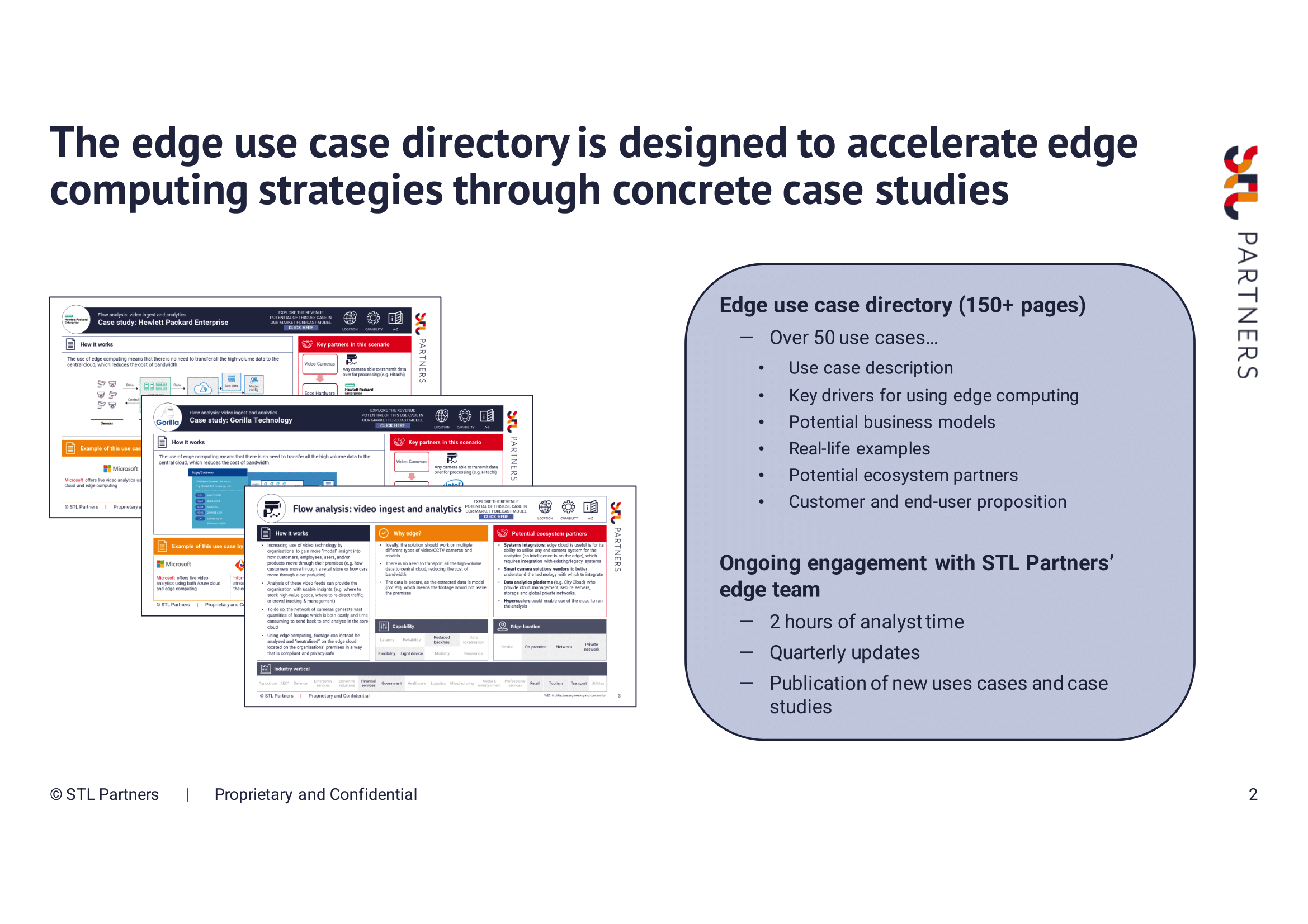As part of the Edge Insights Service, STL Partners has published a use case directory which contains more than 50 edge computing use cases which span across 16 industry verticals. The service is focused on helping those within the edge ecosystem understand edge use cases. This can inform you on the best edge monetisation opportunities, inform your go-to-market strategy and help you understand the key ecosystem partners. To subscribe, or simply find out more, feel free to click here to arrange a call with our team




What is included the edge use case directory?
We are looking to help companies with their edge computing strategy and aim to provide several potential use cases to implement. We include a description of over 50 example use cases alongside the key drivers for these cases using edge computing. The directory also includes:
- Potential business models
- Real life examples
- Potential ecosystem partners
- Customer and end user propositions
We cover a number of verticals within this directory including Agriculture, Emergency services, Extractive industries, Financial services, Manufacturing, Media, Retail and Transport.
An example of some of the use cases found in our directory can be seen in our article: 10 Edge computing use case examples
What are edge capabilities?
We have also defined a number of the edge capabilities each use case will enable:
- Latency: Hosting processing capabilities closer to the end user/device/source of data reduces round trip times (down to a few ms) compared to having to backhaul data to the core
- Reliability: Since data transfer does not have to depend on the wide area network, there is a reduced risk that an edge application will be affected if there is a network failure
- Reduced backhaul: Processing data at the edge reduces the volume of traffic travelling through the backhaul network, reducing costs and avoiding strain on core servers
- Data localisation: Growing concerns around data privacy, and regulations such as GDPR, make the ability to process and store data locally (e.g. on-premise) key to some use cases
- Flexibility: In contrast to dedicated appliances, edge compute infrastructure can host a variety of applications and can quickly scale up/down or prioritise traffic based on demand
- Light Device: Offloading compute from an end-device to the edge allows this device to be both physically lighter and consume less power, enabling otherwise inefficient use cases
- Mobility: Distributed applications across neutral edge infrastructure have workloads that can follow mobile end-devices, giving them access to compute wherever they need it
- Resilience: Applications are hosted on shared edge infrastructure so workloads can be easily moved to alternative servers in case of hardware failure, maintaining service continuity
Next steps
The edge computing market is an ever-evolving space. STL Partners will continue to provide quarterly updates of its edge use case directory with new use cases and examples of edge deployments across our key verticals.
Outside of this directory, STL Partners is adding to its Edge Insights Service, ensuring we publish reports on key topics and incorporate insights through our tools (see an overview of the service below).
